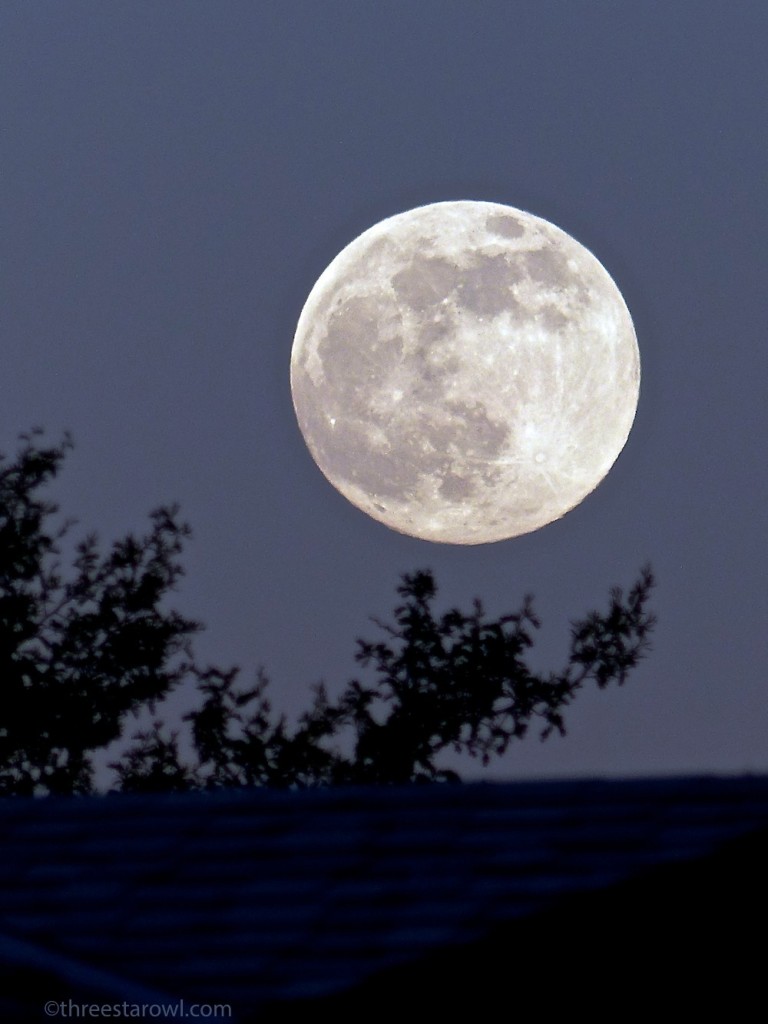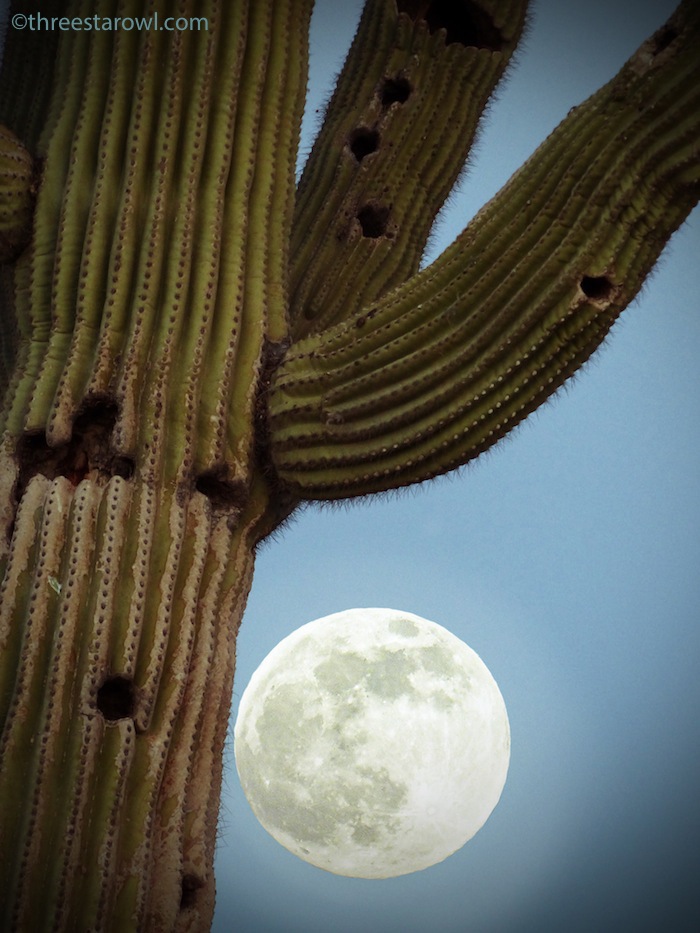Supermoon au naturel, and not
Here’s what the June supermoon looked like last night, rising over our neighbors’ roof:

(photo A.Shock)
The photo above is an unmanipulated image (except for a little tweaking of contrast): I shot the moon, the tree, and the roofline as seen, with a tight zoom and digital cropping.
Now for a little fun. Remember? new camera, still learning. I was able to get good shots of a saguaro at dusk and good shots of the moon — just not both in the same frame! The moon indeed came up under this venerable saguaro’s arms from our viewpoint, but “on film” without quite so much lunar precision (at least in camera: it looked a lot like this to the naked eye). Photo-editing software to the rescue! I edited two of the night’s high-detail photos — one of the moon and one of the giant cactus — into one. Please enjoy the image below, but think of this one as art and not astronomy:

June 22 2013 “supermoon” (composite image A.Shock)
The next “supermoon” is on August 10, 2014; maybe by then I’ll be able to get the shot without benefit of photoshop. In fact, mulling this over, I think I figured out one way to capture both the dim spiny green of the cactus, and the bright silver moon: this may be a job for High Dynamic Range!… And, there’s always tonight, as long as there aren’t any clouds.

I think getting the second shot without manipulation would be very hard indeed. Besides the dynamic range issue, there is the depth of field. You won’t get that moon with that level of detail unless you use a high zoom, and then for the saguaro to be in focus at the same time as the moon you’d need to be standing very well back from both (say 50 meters minimum?), and too far for a fill flash on the saguaro. HDR would help but in a way that is already two pictures merged.
The best way to solve the lighting problem might be to shoot it two days before full, when there’s still some daylight on your saguaro as the moon comes up (or two days past full, just after dawn).
James.
James, those are good ideas. I did think of the fact that my super-imposing of two images was in fact a primitive version of multi-image HDR, although I did adjust the size of the moon as well. I think fill-flash would actually work, but of course you’d get a smaller portion of the cactus, unless you had a strong light source closer to the plant than the camera: I’ve seen photogs use this technique to get great shots of desert plants and sky at night, but of course they have the gear.
Your comment about how hard it is to get the desired effect of both moon detail and cactus detail makes me wonder how many of the shots we see on the internets are photoshopped, too. I’m looking forward to seeing supermoon photos by my friend Ed Bustya, who was up in Sedona last night. I know he specializes in advanced HDR imagery, and I’m laying dollars to donuts that’s the way he went to get detail and correct exposure in both subjects.